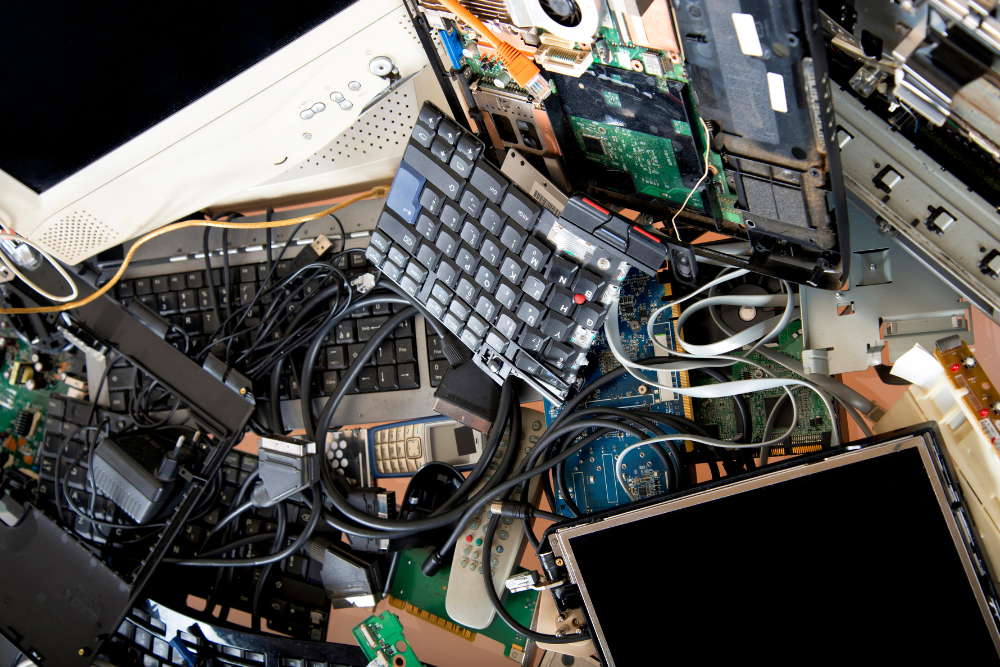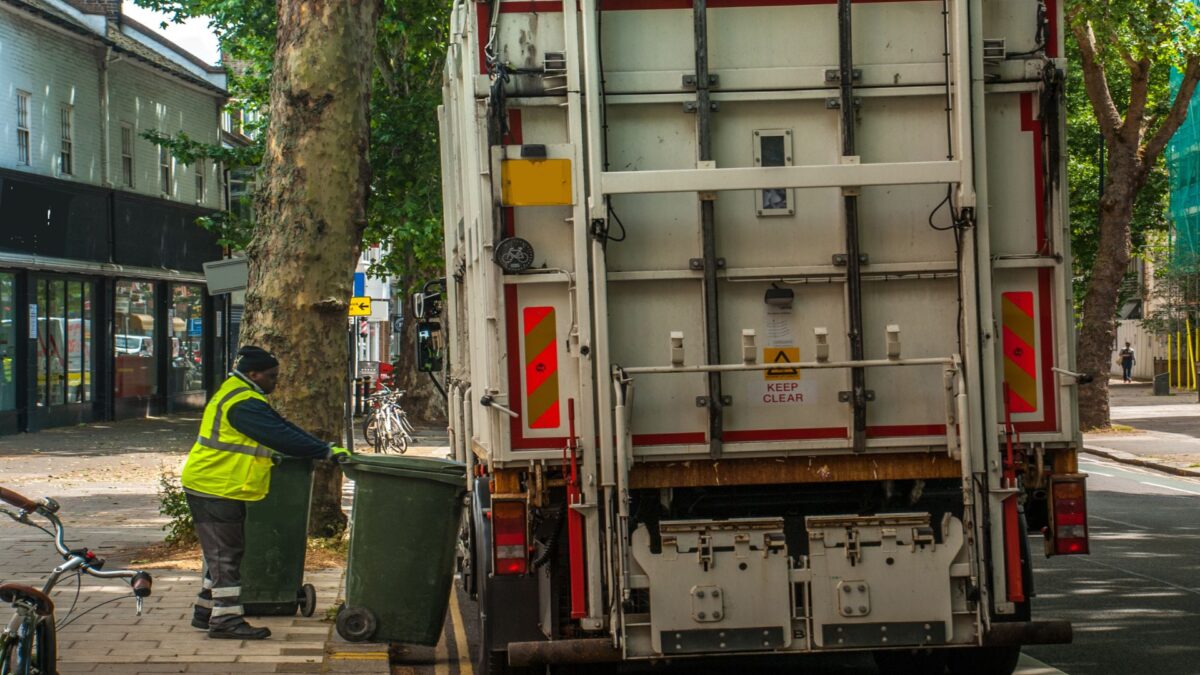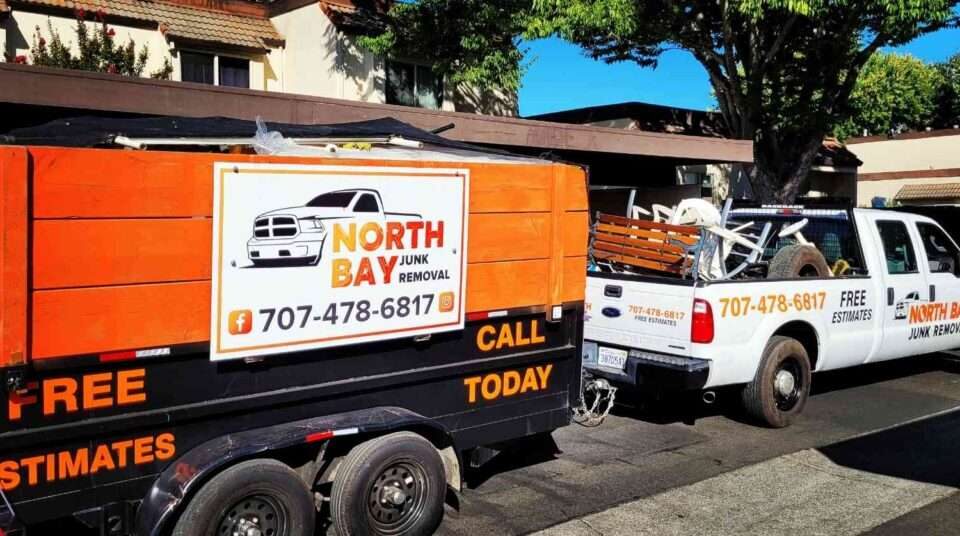
How to Safely Handle E-Waste Disposal
September 15, 2025
The Benefits of Scrap Metal Removal for Your Business
September 15, 2025E-Waste Disposal What You Should Know Before You Dispose
Every year, millions of old phones, computers, televisions, and other electronic devices are discarded, creating one of the fastest-growing waste streams in the world. While technology advances at an impressive pace, the environmental consequences of improperly discarding electronics can be severe. E-waste contains valuable materials like gold, copper, and aluminum, but it also harbors harmful chemicals such as lead and mercury. Disposing of these items without proper care can damage ecosystems, pollute soil, and pose risks to human health.
Understanding the basics of e-waste disposal helps individuals and businesses make responsible decisions. From recycling opportunities to safe collection programs, there are countless ways to prevent electronics from ending up in landfills. However, navigating the rules and practices surrounding e-waste requires some knowledge. Knowing what steps to take before discarding your old gadgets ensures you protect the planet, recover resources, and support a more sustainable cycle of consumption and waste management.
Understanding The Hidden Dangers Of E Waste
When it comes to e-waste, the dangers are not always visible. Inside a sleek laptop or smartphone are components that contain hazardous substances. Lead in circuit boards, mercury in flat-screen displays, and cadmium in batteries all pose serious risks if they are not handled correctly. When left in landfills, these materials can leach into soil and contaminate groundwater, creating long-term damage to ecosystems and public health.
What many people do not realize is that improper disposal does not just affect the environment. It can also harm communities located near waste sites. Toxic fumes from burning electronics or exposure to leaking chemicals can cause respiratory issues and other health complications. By understanding these hidden dangers, individuals and businesses become more aware of the responsibility that comes with disposal. Choosing safe, eco-friendly methods protects both people and the planet while preventing future harm caused by electronic waste.
Why Recycling Electronics Makes A Difference
Recycling old electronics offers more benefits than simply keeping items out of landfills. Many of the materials inside devices can be reused, reducing the need to mine for raw resources. Gold, copper, aluminum, and plastics recovered from discarded gadgets can be reintroduced into manufacturing cycles, conserving natural resources while lowering production costs. Recycling also minimizes the carbon footprint of producing new devices by reducing energy demands.
Beyond the environmental advantages, recycling electronics contributes to the economy. Jobs are created in collection, dismantling, and processing facilities. Local communities benefit when electronics are donated or refurbished for reuse. By supporting recycling programs, consumers ensure that their unwanted devices provide value long after they stop working. Choosing recycling over trash disposal transforms e-waste from a threat into a resource, creating a positive impact that extends from households and businesses to industries and the environment at large.

Identifying What Counts As E Waste
The term e-waste often brings to mind old computers or phones, but it covers a wide range of devices. Anything powered by electricity or batteries can fall into this category once it reaches the end of its life. This includes televisions, printers, monitors, audio equipment, small appliances, and even certain toys. Recognizing what qualifies as e-waste is the first step toward ensuring proper disposal.
Households and businesses alike generate significant amounts of electronic waste each year. As technology advances, people replace devices faster than ever, leading to growing piles of outdated gadgets. By identifying which items are considered e-waste, consumers can avoid accidentally discarding them with regular trash. This knowledge makes it easier to plan disposal through recycling programs or collection services. Taking the time to classify items correctly ensures fewer hazardous materials end up in landfills and more resources return to the production cycle.
Preparing Your Electronics For Safe Disposal
Before sending electronics off for recycling or collection, preparation is key. For devices such as computers, smartphones, or tablets, removing personal data is essential. Simply deleting files is not always enough, as sensitive information can sometimes be recovered. Using data-wiping tools or factory reset functions ensures your information stays secure even after the device leaves your hands.
Physical preparation is also important. Remove batteries from devices, as they require specialized handling. Keep cables, chargers, and accessories organized since many recycling programs accept them. If items are still functional, consider donating them rather than discarding them. Preparing electronics properly not only streamlines the recycling process but also increases the likelihood of reuse. By taking these small but critical steps, individuals ensure their old devices are handled responsibly, safely, and with the maximum potential for recovery and environmental benefit.
Local Laws And Regulations You Should Know
Disposing of e-waste is not just a matter of personal choice; in many areas, it is governed by local laws. Some states or municipalities prohibit electronics from entering landfills altogether, requiring residents to use designated collection sites or certified recycling programs. These regulations exist to prevent environmental damage and encourage responsible waste management practices.
Ignoring such laws can lead to fines or penalties, but more importantly, it contributes to pollution and resource loss. Staying informed about local rules helps ensure compliance and supports community-wide efforts to reduce waste. Many cities also organize e-waste collection events where residents can safely drop off old electronics. By taking advantage of these opportunities, individuals align with local sustainability goals while protecting themselves from potential liabilities. Awareness of regulations makes responsible e-waste disposal less of an option and more of a shared responsibility.
The Role Of Certified Recycling Centers
Certified recycling centers play a crucial role in managing e-waste responsibly. Unlike unregulated facilities, certified operations follow strict guidelines to dismantle electronics safely, extract valuable materials, and prevent hazardous substances from entering the environment. These centers often maintain partnerships with manufacturers, ensuring that parts are returned to the production cycle in a controlled and efficient way.
For consumers, choosing a certified recycling center guarantees peace of mind. It provides assurance that old devices are handled legally and sustainably. Certification also means workers are trained to manage hazardous components safely, minimizing risks of accidents or pollution. Whether dropping off a single item or arranging bulk disposal, relying on certified facilities ensures that the process contributes positively to environmental goals. Supporting these centers encourages more responsible industry practices and helps reduce the growing global challenge of electronic waste management.
Donation As A Sustainable Option
Not all electronics belong in recycling bins. Devices that still function can often find new life through donation programs. Schools, nonprofits, and community organizations frequently accept used computers, phones, or appliances, extending their utility to those who cannot afford new ones. Donation reduces waste, conserves resources, and provides social benefits by connecting technology to people in need.
Before donating, ensure devices are in working condition and data is securely erased. Many donation centers refurbish electronics to restore functionality, making them usable for years to come. Choosing donation over disposal creates a cycle of sustainability that benefits both the environment and communities. It is a reminder that responsible e-waste management is not just about recycling materials but also about maximizing value. By donating, individuals turn unwanted electronics into opportunities for education, access, and positive change.
Avoiding Common Mistakes In E Waste Disposal
Despite good intentions, many people make mistakes when disposing of electronics. Tossing e-waste into household trash is one of the most damaging errors, as it often leads to environmental contamination. Others assume recycling centers accept all devices without checking requirements, resulting in rejected items. Taking shortcuts with data removal also exposes personal information to potential misuse.
To avoid these mistakes, research disposal options thoroughly and follow preparation steps carefully. Contact local recycling programs to confirm accepted items and requirements. Use secure data erasure methods before discarding devices. Another common oversight is failing to separate batteries from electronics, which can cause fires or leaks. By learning from these mistakes, individuals make the disposal process safer and more efficient. Avoiding errors ensures e-waste is managed responsibly, protecting both the environment and the individuals involved in handling discarded devices.
The Future Of E Waste Management
As technology continues to evolve, e-waste management is becoming more critical. Governments, manufacturers, and communities are investing in systems that prioritize recycling, safe disposal, and reuse. Innovations in processing are making it easier to recover valuable materials from electronics, reducing dependence on resource extraction. At the same time, manufacturers are designing devices with sustainability in mind, focusing on repairability and recyclability.
For consumers, this means greater access to responsible disposal options. Collection events, certified facilities, and take-back programs are becoming more widespread. Public awareness is also increasing, leading more people to adopt eco-conscious habits. The future of e-waste management lies in collaboration between individuals and institutions, ensuring that discarded electronics become resources rather than burdens. By embracing these changes, society moves closer to a circular economy where technology continues to serve without leaving harmful environmental legacies.
Conclusion
E-waste disposal is not a task to take lightly. Old electronics can contain both valuable resources and hazardous substances, making proper handling essential. By understanding the dangers of improper disposal, learning about recycling and donation opportunities, and following local regulations, individuals and businesses can make responsible choices. Certified recycling centers, data security steps, and safe preparation ensure that the disposal process benefits both people and the environment.
For those living in Santa Rosa, CA, North Bay Junk Removal offers dependable junk removal services with eco-friendly solutions, including safe handling of electronic waste. Their team is dedicated to keeping harmful materials out of landfills while maximizing recycling and donation opportunities. To schedule an environmentally responsible service, call North Bay Junk Removal at 707-478-6817 today. With their support, you can ensure that your unwanted items are managed responsibly while contributing to a cleaner and healthier future.




